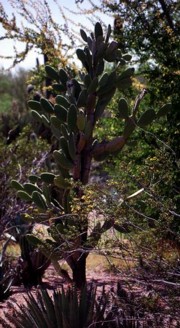The desert is a fascinating place, but even it struggles to survive. There are many threats that can destroy it if they continue. Some of them are: city development, little rainfall, off-road vehicle use, and global warming.
First of all, there used to be very few people in the desert, but all of that changed soon when people started claiming that there were certain health benefits of living in the desert. People soon started to make cities in the desert, causing the destruction of many plants and animals.
With little rainfall to leach away minerals, mining became common in desert areas. Many areas are irrigated for agricultural purposes, which causes more destruction. If enough water is not supplied to flow off the land and carry away salts, then those salts will build up, soon leading to the salinization of the soil. This will cause salt levels to become so high, that plants will not be able to tolerate it and will die.
Off-road vehicle use may kill or crush plants and animals in the way. Also, since there are no roads in the desert, vehicles have the freedom to travel wherever they wish. They disturb the desert pavement and varnish, leaving the soil underneath open to wind erosion. Since the plants in the desert take a long time to grow, damage can remain for a long time
We can help save the desert in many ways. First, you can donate money to good organizations such as WWF (World Wildlife Fund) so they can save the animals. You can also choose what animal you would like to save. In this case, you could donate money to a desert animal such as the desert tortoise. Another way is to sign and participate in petitions that try to stop building projects going on in the desert. You could even start one yourself! If you want to go to the extreme, you could even participate in protests against these projects! Well, today is my last day in the desert. I sure did learn a lot! I am going to leave in a few hours. Stay tuned for my next series!
-Kiran




